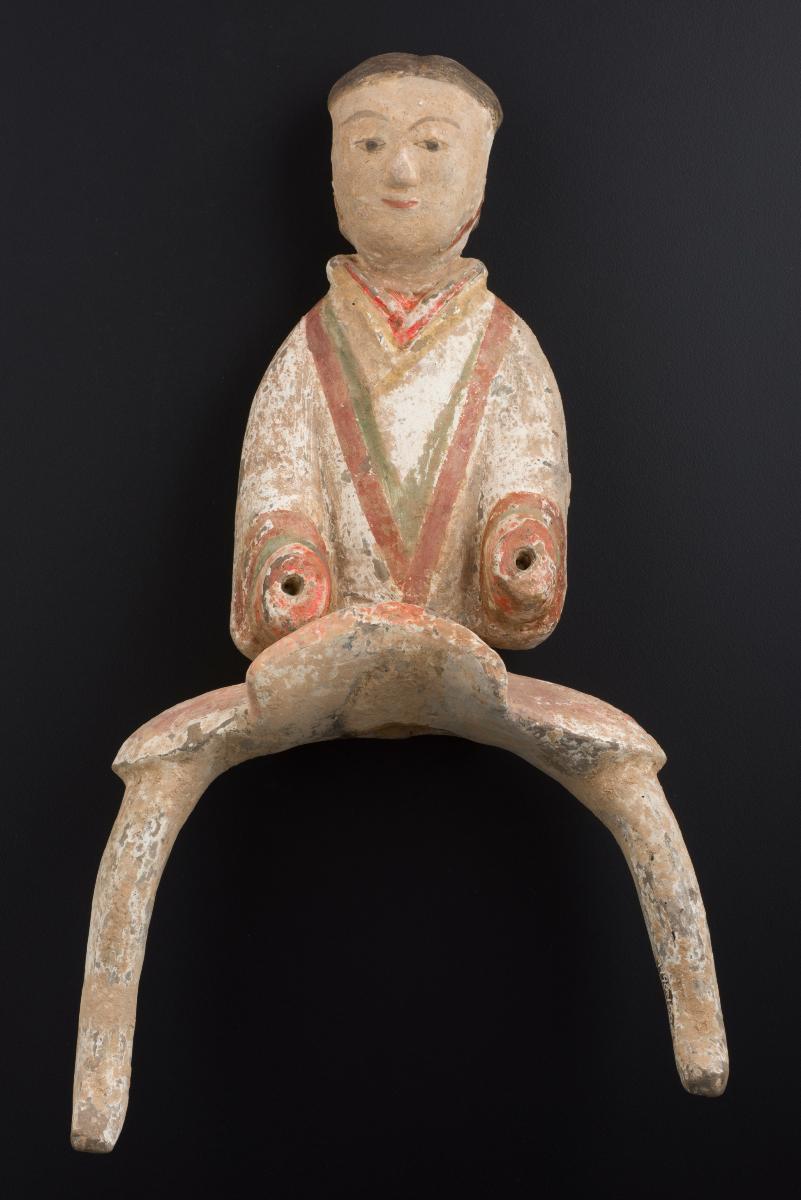This figurine of a Han retinue rider is dressed in a red and white tunic. The curved shaped of his legs meant he was to be placed on a horse. His outstretched hand position suggests he was probably holding the reins of the horse. Instead of human sacrifices, Han figurines such as this were substituted and most likely used as burial goods or ‘mingqi’ for a rich and influential Han person. It is thought such wares were necessary for the deceased in the next world. Elaborate groups of burial wares were also a display of wealth and social status.Such Han figurines are very similar to the large retinue of pottery soldiers found at the famous Yangjiawan site in northeastern Xianyang in Shaanxi province, China.






